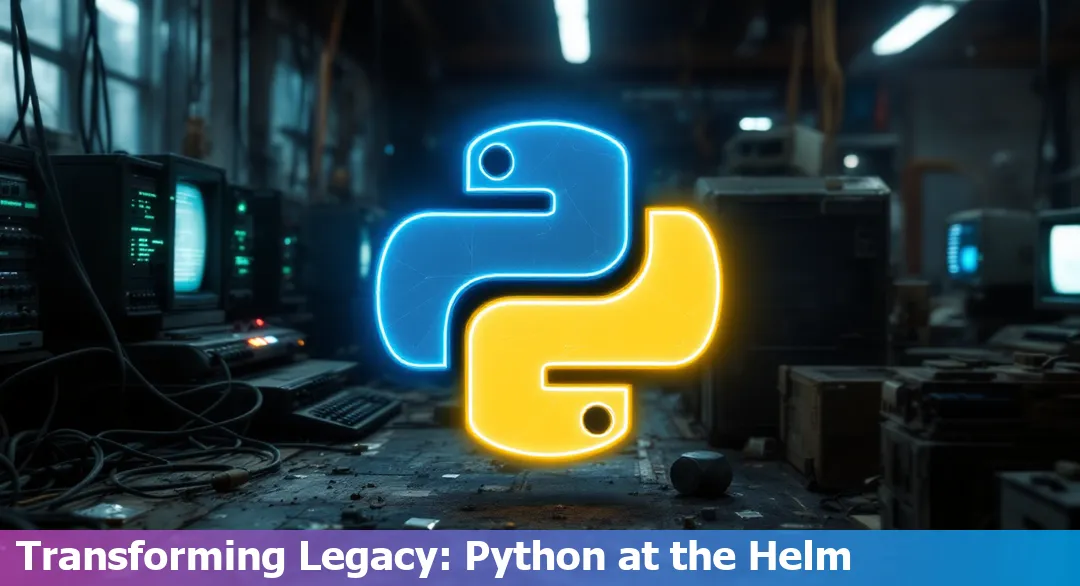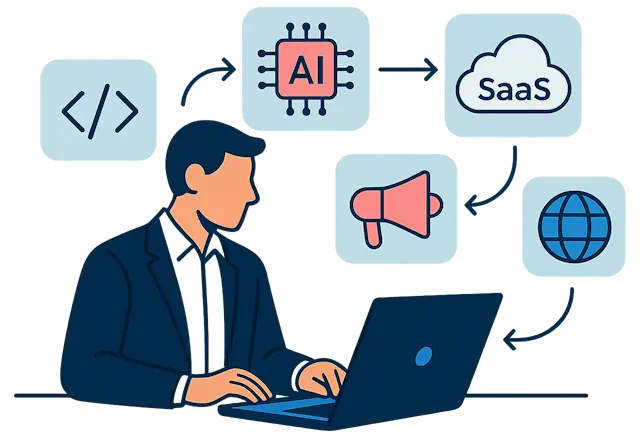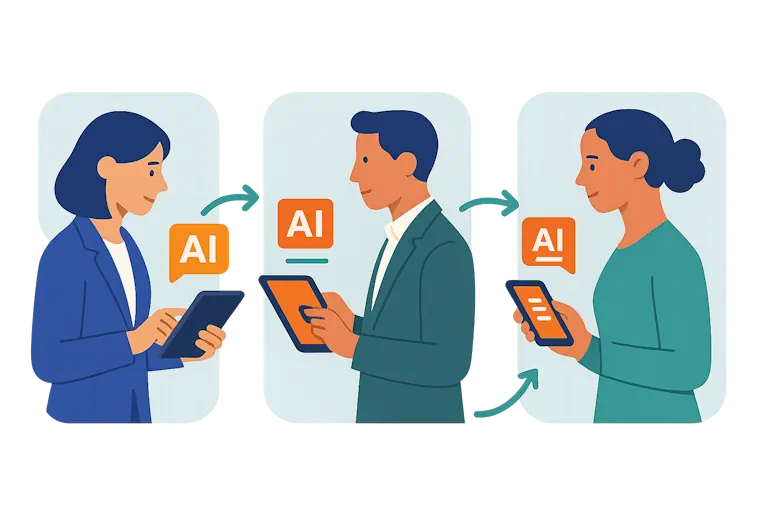Managing Legacy Systems in 2025: Python's Role in Modernizing Old Backend Codebases
Last Updated: February 22nd 2025

Too Long; Didn't Read:
In 2025, managing legacy systems is essential, with Python playing a key role in modernizing outdated backend codebases. Companies spend 80% of IT budgets maintaining old systems, leading to cybersecurity risks and inefficiencies. Modernization boosts efficiency by 40%, cuts maintenance costs by 50%, and enhances security, with Python's simplicity and extensive libraries facilitating smoother transitions through cloud migration, automation, and AI integration. Adopting Python helps businesses remain competitive, offering gradual modernization without major disruptions while ensuring future-proof, adaptable operations. Successful transformations demonstrate Python's effectiveness in revitalizing legacy systems.
Legacy systems in 2025 are seriously holding businesses back, and it's getting expensive. According to recent studies, companies are burning through 80% of their IT money just keeping old systems running.
The struggle is real - these outdated systems can't keep up with today's tech demands, and they're basically leaving the door open for cyber attacks. Companies that upgrade their systems are crushing it with 25% better efficiency, plus they're way more secure against cyber threats, which have jumped 67% recently.
- Compatibility issues are critical. Biggest headaches arise from dealing with compatibility issues and figuring out how to upgrade without shutting everything down.
- Modern approaches improve transitions. Cloud migration and microservices are making transitions smoother than ever.
- Python takes the lead. With Python leading the charge in backend modernization, businesses find smart ways to update without causing chaos.
Sure, it's a challenge, but with the right strategy, companies can turn these old systems into something that actually works for 2025 and beyond.
Table of Contents
- Key Reasons to Modernize Legacy Systems
- Modernization Strategies for Legacy Systems
- Python's Role in Legacy Codebase Modernization
- Best Practices for Using Python in Modernization
- Case Studies: Successful Legacy System Modernizations Using Python
- Frequently Asked Questions
Uncover the latest trends shaping backend development in 2025 and stay ahead in your tech career.
Key Reasons to Modernize Legacy Systems
(Up)In 2025, modernizing legacy systems isn't just a nice-to-have - it's absolutely essential for staying competitive. Replacing outdated systems can dramatically boost operational efficiency by streamlining workflows and cutting down on system crashes.
The numbers are pretty mind-blowing: businesses see efficiency jumps of around 40% after upgrading. Modern systems are way more secure, slashing data breach risks by 35% through better encryption and real-time threat detection.
Plus, smart modernization strategies can cut maintenance costs in half, which basically pays for itself within a couple of years.
The tech world moves super fast, and staying current is everything.
Modern systems can easily connect with new tech, which is crucial for growing your business and keeping up with digital trends. According to recent industry analysis, businesses that upgrade their systems see massive improvements in user experience, with engagement rates jumping up by 60%.
This happens because everything runs faster and smoother - no more frustrating load times or system crashes that drive everyone crazy.
Looking at 2025, modernizing isn't just about getting shiny new tech - it's about completely transforming how businesses operate to stay ahead of the competition.
Companies that stick with old systems are seriously risking falling behind because they're spending too much money maintaining outdated tech and can't move quickly enough to keep up with market changes.
That's why more businesses are turning to technologies like Python to handle their modernization needs. It just makes sense - you get better data analytics, smoother integration with other systems, and way more flexibility to adapt as things change.
The stats don't lie - between the efficiency gains, security improvements, cost savings, and happier users, modernizing legacy systems is basically a no-brainer for any business that wants to crush it in today's digital world.
- Efficiency Improvements: 40% increase in operational efficiency signifies modernization impact.
- Security Enhancements: Enhanced security measures lead to 35% reduction in risk.
- Cost Reduction: Modernization can cause a significant decrease in maintenance costs by 50%.
- User Satisfaction: A substantial boost in user satisfaction, with a 60% improvement.
Modernization Strategies for Legacy Systems
(Up)Legacy system modernization in 2025 demands smart strategy choices to stay competitive. Replatforming has become a go-to approach for moving applications to new environments with minimal code changes, making it perfect for quick wins.
It's like giving your old car a new engine - same car, better performance!
Meanwhile, rearchitecting works best for complex, business-critical applications where simple updates won't cut it.
Think of it as rebuilding your house from the ground up - it takes more time and money, but you end up with exactly what you need. The real game-changer has been the strategic alignment with current tech trends, which makes integration way smoother.
Companies are crushing it with cloud migration, making their systems more flexible and cost-effective.
The trick is picking the right approach based on your specific situation:
- Quick Upgrade: Some businesses need quick upgrades to keep running.
- Complete Overhaul: Others can afford to take their time and do a complete overhaul.
It's not just about fixing what's broken anymore; it's about making sure your system can handle whatever comes next.
The most successful modernization projects in 2025 combine different approaches, using replatforming for quick improvements while planning longer-term architectural changes.
This balanced strategy helps businesses stay competitive without breaking the bank or risking major disruptions.
Python's Role in Legacy Codebase Modernization
(Up)Python has become a game-changer for legacy system modernization in 2025, offering a practical path forward for outdated systems. As a developer working with legacy code, I've seen firsthand how Python's clear syntax and maintainability make it perfect for transforming old codebases.
It's not just about writing new code - Python helps us maintain and understand what we're working with, which is super important when dealing with legacy systems.
The language's straightforward approach means even junior developers can jump in and start contributing quickly, while its extensive ecosystem of libraries helps tackle complex modernization challenges.
As someone who's had to learn multiple programming languages, I can confirm Python's learning curve is much gentler compared to others.
What's really cool is how Python enables system modernization through automation and cloud integration.
Python development services are revolutionizing legacy software through cloud migration, process automation, and AI integration.
I've seen teams use Python to create powerful APIs that wrap around legacy systems, making them instantly more accessible and easier to work with. This approach lets companies modernize gradually without disrupting their core business operations.
The real power comes from Python's ability to handle both the automation of tedious tasks and the implementation of modern features like machine learning and data analytics.
The most exciting part about using Python for modernization is its future-proof nature.
Recent studies show that modernization efforts significantly improve system efficiency and reduce maintenance costs.
Python's strong community support and constant evolution mean we're not just fixing old problems - we're building systems that can adapt to whatever comes next.
Whether it's integrating with new cloud services or implementing cutting-edge AI features, Python provides the flexibility and tools needed to keep systems current and competitive.
This makes it an incredible choice for anyone looking to modernize their legacy systems in 2025 and beyond.
Best Practices for Using Python in Modernization
(Up)In 2025, modernizing legacy systems requires a smart blend of technical assessment and innovative solutions. Regular software audits have become essential for identifying outdated components and performance bottlenecks.
Python's ecosystem makes this process much easier, especially when dealing with complex legacy code. The real game-changer is how artificial intelligence is transforming legacy system updates.
Using Python's machine learning libraries, developers can now analyze and optimize old codebases faster than ever. Companies using AI-powered code analysis tools are seeing up to 40% improvement in their development efficiency.
When it comes to actually updating these systems, choosing the right modernization strategy makes all the difference.
Python supports multiple approaches: replatforming for cloud migration, rearchitecting for better system design, or refactoring for code improvement. Each method has its strengths - replatforming is great for quick cloud transitions, while rearchitecting helps create more efficient systems.
Recent studies show that businesses choosing the right Python-based approach are seeing major improvements in system performance and team productivity.
Documentation is super important too, and Python's got that covered.
Modern automation tools are cutting documentation time by more than a third, which is huge for keeping everything organized and up-to-date.
Here's what works best when modernizing with Python:
- Thorough system analysis using Python tools is necessary to start the modernization process.
- Optimize existing code with AI and machine learning to increase efficiency.
- Select a modernization strategy that aligns with your specific needs to ensure effectiveness.
- Automate documentation to save time and reduce errors.
These steps help ensure your legacy system upgrade actually delivers results in today's tech landscape.
Case Studies: Successful Legacy System Modernizations Using Python
(Up)Looking at successful legacy system transformations in 2025, Python's proven itself as a game-changer. Take Walmart's transformation story, where they built a hybrid cloud system that cut operational costs by 40% and seriously boosted their performance.
Another awesome example is Netflix, which ditched their old infrastructure and went all-in with cloud-based microservices using Python, making their streaming service way more reliable and scalable.
These changes weren't just about tech - they completely changed how these companies operate. What's super interesting is how modern Python frameworks made these transitions smoother than expected.
Companies didn't have to stop everything and start from scratch; they could update their systems piece by piece, keeping their business running while making improvements.
Python's simple syntax meant developers could focus on solving problems instead of getting stuck on complicated code. The best part was how Python's huge community came through with solutions for pretty much every challenge these companies faced.
Looking at these success stories, it's clear that Python isn't just a programming language - it's become the go-to tool for bringing old systems into 2025 without causing chaos.
Whether it's setting up APIs, moving to the cloud, or building microservices, Python's got it covered.
Frequently Asked Questions
(Up)Why is it essential to modernize legacy systems in 2025?
Modernizing legacy systems in 2025 is essential for staying competitive due to increased operational efficiency, improved security, and significant cost reductions. Companies that upgrade their systems can achieve around a 40% increase in efficiency and a 35% reduction in data breach risks. Additionally, maintenance costs could be cut by 50%, making modernization financially viable.
How does Python facilitate the modernization of old backend codebases?
Python plays a key role in modernizing old backend codebases by enabling system transformation through automation and cloud integration. Its simple syntax and extensive library support allow for creating APIs and handling modernization challenges seamlessly. Python's ability to incorporate AI and data analytics also enhances system efficiency and functionality.
What modernization strategies are effective for legacy systems?
Effective modernization strategies include replatforming for quick cloud transitions, rearchitecting for optimal system design, and refactoring for code improvement. Leveraging a combination of these strategies allows businesses to keep systems running while gradually implementing changes to improve performance and stay competitive.
What challenges do businesses face when updating legacy systems?
Businesses face challenges like dealing with compatibility issues, managing transitions without significant disruptions, and ensuring system security. However, modern approaches like cloud migration and microservices, along with Python's automation capabilities, help mitigate these challenges effectively.
What role does Python's community play in legacy system modernization?
Python's strong community support provides solutions for a wide range of challenges encountered during legacy system modernization. This community contributes to the development of tools and libraries that make modernization processes more efficient, helping companies achieve smoother transitions and better system performance.
Explore the remarkable growth and significance of Python in the Introduction to serverless computing in 2025.
Venture into how Quantum computing influences are refining security and computational power for CI/CD workflows.
Understand the benefits of loose coupling and scalability provided by embracing event-driven architectures.
Discover the importance of backend scaling for meeting the ever-growing global demand in 2025.
Discover the latest containerization trends in 2025 that are shaping the global tech landscape.
Delve into specific Modern ORM use-cases that highlight their strengths and weaknesses in diverse applications.
Discover the essence of ETL processes and their importance in effective data management strategies.
Discover how the scalability challenges of APIs are being addressed in 2025 with the power of Python.
Ludo Fourrage
Founder and CEO
Ludovic (Ludo) Fourrage is an education industry veteran, named in 2017 as a Learning Technology Leader by Training Magazine. Before founding Nucamp, Ludo spent 18 years at Microsoft where he led innovation in the learning space. As the Senior Director of Digital Learning at this same company, Ludo led the development of the first of its kind 'YouTube for the Enterprise'. More recently, he delivered one of the most successful Corporate MOOC programs in partnership with top business schools and consulting organizations, i.e. INSEAD, Wharton, London Business School, and Accenture, to name a few. With the belief that the right education for everyone is an achievable goal, Ludo leads the nucamp team in the quest to make quality education accessible


